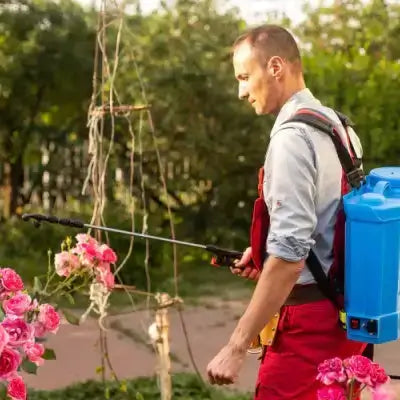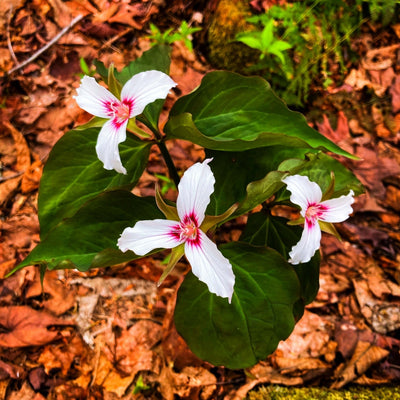Guidelines to Take to Avoid Black Mold at Home
You find black mold creeping into a few places at home? Oh boy, you are in trouble, and you find that black mold shapes scoops… those are just a few places. If you are facing something similar, then you must know proper black mold shapes along with the health concerns such as allergies and difficulty in breathing.
In this piece, I shall go over the simplest means to contain the black mold shapes and explore some plants that assist in keeping mold at bay along with a few germane tips to help you mold away.
What is Black Mold?
The black mold is an unwelcome guest, and whether wanted or unwanted, black mold thrives in any and all desktops. If you are one of those anxious creatures and want no black mold creeping into desktops, then you must understand and help the black mold get the air it craves.
Permanently Stopping Black Mold
To completely prevent black mold, it is necessary to prevent and stop the causes of black mold and address the root issues. Black mold grows best in moisture-rich parts of the home. Thus, maintaining and controlling humidity is essential. Here is how you can prevent and stop black mold permanently and completely.
Repairing Existing Leaks
Water leaks are a leading cause of mold growth and can appear in windows, roofs, and pipes. Every leak has to be properly sealed and fixed the moment it is noticed. Even a very small leak can create a large enough moisture problem in the air to cause mold growth.
Controlling Indoor Humidity
The indoor humidity has to be sustained and kept below 60% at all times to prevent mold problems. Use dehumidifiers and moisture controllers, especially in high humidity and moisture regions like basements and bathrooms. Use exhaust fans and ventilators to ventilate these regions properly.
Decreased, Slowed, and Restrained Air Mobility
Mold grows faster in air that remains stagnant, and microbial air is still. Reducing moisture in the air and controlling microbial air resting stagnant is key. Reduce and restrain stagnant air usage. Use opened windows, air conditioning, and ventilation to reduce stagnant air to a condition below set thresholds.
Building Materials that Resist Mold
In regions that are at risk of high moisture, using specially mold-resistant paint, drywall, and dry insulation can help in reducing the chances of mold buildup. These materials are proven to reduce and stop the growth of extreme mold.
Keep Mats and Rugs Clean and Dry
In your bathroom, kitchen, and laundry room during cleaning, always focus on areas that tend to be damp, especially around the sink, bathtub, and shower, where water tends to collect.
How Do You Get Rid of and Kill 100% of Black Mold?
Black mold is mold that grows on damp surfaces and is best removed without being left behind because of its ability to spread everywhere. Few natural and chemical products can rid a surface of black mold:
Bleach
Bleach is a popular cleaning agent and is considered to be a powerful mold remover. Using bleach, one is able to kill mold growth on surfaces that do not absorb moisture such as floor and wall tiles, glass, and kitchen countertops. Mold growth on fences, wooden furniture, and gypsum blocks may not be penetrated and removed by bleach because they are porous surfaces.
Vinegar
Vinegar is also effective for killing black mold and can kill it just like bleach can. Black mold, just like any other form of mold, can be broken down and killed by the natural acidic properties of white vinegar. It works by being sprayed on the area of growth, left for a while, and then wiped off.
Hydrogen Peroxide
For black mold, especially on porous surfaces, which can be very inconvenient, using hydrogen peroxide ensures it will be killed. Hydrogen peroxide is particularly effective when dealing with mold on porous surfaces.
Baking Soda
Adding baking soda to water makes a mixture that creates a fantastic surface and shield for black mold to grow and also be removed. It is a great tool for those who strive to use very strong cleaning surfaces.
How Can Black Mold Be Prevented?
Mold and mildew like to grow when there is still air or moisture. Here are some ideas to consider:
Increase Air Circulation
Try to air out spaces in your house like the bathroom and kitchen that tend to get moist. Put vents and exhaust fans in the bathroom and kitchen to push moisture out into the air.
Use Special Indoor Plants
Some plants can help reduce damp air and help reduce the chances that mold develops. These plants include:
-
Peace Lily: Excels in humid spaces such as bathrooms that need air moisture regulation. It absorbs the excess moisture and toxins in the air, which purifies the air.
-
English Ivy: Excellent and hardy plant that moistens air and purifies it. Good at eliminating mold spores and toxins from the air.
-
Spider Plant: Reduces indoor humidity, which is common in bathrooms, and is good at air filtering.
Frequent Checks for Mold Growth
Check areas like sinks, in the basement, and windows to see if there are any mold spores. There should be no moisture or dampness, and if there is, attend to it. Dehumidifiers can help.
If your area has long periods of humidity, a dehumidifier can help lower the moisture levels near your house, which can help deter mold growth.
What Plant Removes 78% of Airborne Mold?
The plant that does this best at removing airborne mold and improving indoor air quality is the English Ivy. English Ivy is able to remove up to 78% of airborne mold and other harmful particles within only a few hours. This plant does well in an area that is poorly ventilated and has a lot of moisture in the air.
Other plants that fall under this category include the Peace Lily and Spider Plant, which also help to purify the atmosphere and get rid of mold.
Is It Okay to Live in a House With Black Mold?
This is considered unsafe because black mold is a dangerous toxin that may cause serious health implications. Prolonged contact with mold can lead to respiratory problems, allergies, and many other health issues, which are much more severe in children, the elderly, and people with low immunity. Black mold should be taken care of right after it appears by constructing and maintaining proper cleanliness, drying, and shunning moisture.
Why Isn’t There Mold in Japanese Bathrooms?
The bathrooms in Japan are considered cleaner than those in other countries and do not tend to have mold. This can be attributed to:
-
Ventilation: In Japan, restrooms have powerful exhaust fans. These are set to run automatically anytime the restroom is in use. This is to get rid of any dampness in the air to prevent mold from forming.
-
Heated Floors: Bathrooms, as well as other types of rooms in Japan, have them. This is to get rid of moisture from the air, which is a cause of mold.
-
Wet and Dry Areas: In some traditional Japanese bathrooms, the shower and bathing areas are merged. This, in turn, lowers the moisture levels in the room.
Conclusion: Eliminating Black Mold from Your Home
Implementing some of the techniques above, paying attention to moisture levels, and placing mold-resistant plants (for instance, the Peace Lily, English Ivy, and Spider Plant) in your home can help improve air quality and prevent mold growth.
If you are looking to buy plants, TN Nursery is the perfect option. They offer a variety of plants that not only beautify your home but also help in preventing mold growth as well.
FAQs
How to permanently stop black mold?
The black mold should be able to be permanently dealt with by getting rid of any sources of moisture. Moisture can be caused by leaks, ventilation, and humidity. In addition, moisture-resistant materials can be used to mitigate mold growth over a long period of time.
What kills 100% of black mold?
Bleach is a potent solution that is capable of killing 100% of black mold. Alternatively, vinegar, hydrogen peroxide, and baking soda do not harm a person’s health and efficiently kill mold.
How can black mold be prevented?
Preventing black mold can be accomplished by controlling humidity, fixing water leaks, using mold-resistant materials, and cleaning surfaces regularly. In addition, using moisture-absorbing plants, such as Peace Lilies, can also reduce the growth of mold.
What plant removes 78% of airborne mold?
In a matter of hours, English Ivy can absorb and filter up to 78% of airborne mold spores, making it one of the best houseplants for eliminating airborne mold and other pollutants. It works best for spaces with limited airflow and windows.
Is it okay to live in a house with black mold?
Living in a house with black mold will likely aggravate not only your allergies but your overall health as well. Doing something about the mold as well as the moisture covering it will help you in the long run.
How do Japanese bathrooms not get mold?
Bathrooms in Japan, specifically designed to reduce the risk of mold, have controlled humidity, heated flooring, ventilators, and divisions between wet and dry areas.


